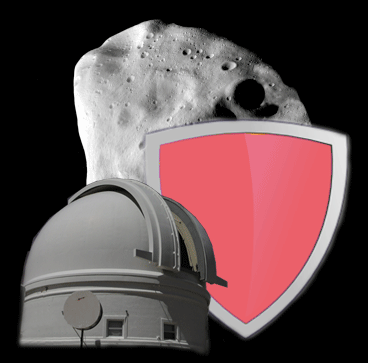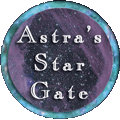
Near Earth Asteroids



The first asteroid detection program goes back before the first asteroids were found. It was the beginning of a new century, the 1800's, and the telescopic astronomical era was in full bloom. The ability to form and figure astronomical mirrors had arrived and amateur astronomer William Herschel had discovered Uranus using a telescope he had crafted with his own hands. Astronomer Franz Xaver von Zach in Germany formed a society of astronomers devoted to search for a planet between the orbits of Jupiter and Mars that had been predicted by Titius and Bode. Because they were to bring order to the solar system, they called themselves the "Celestial Police". They formed an international astronomical organization. Each astronomer was assigned a 15-degree region along the ecliptic to police.
On January 1, 1801, Giuseppe Piazzi discovered Ceres that was soon named after the Roman goddess of the harvest. Fifteen months later, Heinrich Olbers discovered the second asteroid, Pallas. The detection program paid off and soon the new objects were called "asteroids." due to their star-like appearance.
Quick Links
An algorithm for amateur astronomers to identify asteroids in images
Breaking news on asteroids and NEOs from JPL
An International Threat
-Planetary Defense - - National Space Society
TheAsteroid-Comet Danger and Planetary Defense: A View from Russia
Presented at the Schiller Institute - April 2014
- NASA -
Planetary Defense Coordination Office
DART - Double Asteroid Redirection Test
You may also like Astra's NEO Page
It is estimated that a 30-year advance warning would be required to have a reasonable assurance of deflecting a NEO from a collision with Earth. Thus, if a future impactor were identified today, the time to explore the characteristics of the NEO, develop a deflection system, deliver it to the NEO, and apply the deflection early enough to prevent an impact, requires about a 3-decade lead time.
--Michael Griffin, NASA Administrator
Congressional Testimony 2005
Newly discovered asteroids or comets are rapidly processed by the astronomical community:
When new are objects discovered by astronomers or a survey system, they are reported to the Minor Planet Center (MPC).
MPC makes an initial orbit calculation to determine if the newly discovered object is a Potentially Hazardous Object (PHO). If it is a potential hazard, MPC issues an alert through circulars to alert observers and generate additional observations.
If the initial orbit calculation suggests that an impact is possible, MPC issues an additional alert of a possible close approach and alerts the NASA JPL SENTRY program to obtain a highly accuracy orbit determination. MPC also issues circulars for follow-up observations by others.
Precision orbit determination and impact predictions are verified and validated by comparing results with a parallel trajectory prediction capability at the European NEO Dynamics Site (NEODyS).
If precision orbit and follow-up observations doesn't eliminate the impact possibility, NASA publishes the probability of impact and Torino Scale evaluation.
Smaller telescopes and amateur astronomers are not able to provide value during initial detection, however, when an object's position is known, they can provide valuable follow-up observations.
National Near-Earth Object Preparedness Strategy and Action Plan - Released 2018 - a report from the National Science & Technology Council for detecting and mitigating the impact of Earthbound NEOs. National approach to detection and protection.
Interagency Report - National approach to detection and protection.
Follow Up Programs help to Verify New Object Orbits
Other Observatories:
Highland Road Park Observatory - Asteroid Work
A joint project between The Recreation and Park Commission for the Parish of East Baton Rouge, the Louisianna State University Dept. of Physics and Astronomy, and the Baton Rouge Astronomical Society the Highland Park observatory has discovered 55 new asteroids since May of 1998 as of this writing (Fall 2013). Wow! The 20-inch telescope and cameras are used to image asteroids below 18 magnitude.
The Double Asteroid Redirection Test (DART) mission is the first attempt to change the course of an asteroid. It is not as easy as it might seem and most models show that much energy will be required. DART launched on a SpaceX Falcon 9 rocket from the Vandenberg Space Base in November 2021. It is traveling to a binary asteroid system called Didymos. The Didymos asteroid is about half a mile in diameter (780m, 0.48mi), and like many asteroids it has a companion, named Dimorphos. A small body orbiting an asteroid is called a moonlet.
The DART spacecraft will attempt to deflect the asteroid by deliberately crashing into Dimorphos at a speed of ~ 6.6 km/s. It will use the Didymos Reconnaissance and Asteroid Camera for Optical (DRACO) and its autonomous navigation software. This collision should change the speed of the moonlet in its orbit a fraction of one percent, and this will change its orbital period by several minutes. Because the Didymos system's orbit is visible from Earth, it should be enough that it can be observed using telescopes on Earth.
ESA's HERA mission will study DART's impact on Didymos and Dimorphos asteroids. It will navigate autonomously. Hera is due to launch in 2024. HERA is named after the Greek goddess of marriage, reflecting the international cooperation nature of these missions. DART and HERA make up the Asteroid Impact and Deflection Assessment (AIDA) mission.
Find out more at Astra's about the DART mission
In 1960, the first Palomar-Leiden Survey first operated using photographic plate. A total of 130 plates were taken over 11 nights in the fall of 1960, resulting in 2,400 discoveries. Later there were 3 Palomar-Leiden Trojan Surveys resulting in over 2,650 discoveries. (1971, 1973 and 1977) The plates were digitized in 2005. These surveys discovered ~2400 asteroids in 11 nights.
1973-1983 - The Palomar Planet-Crossing Asteroid Survey (PCAS) - A survey program by E. Helin and E. Shoemaker that discovered several thousand asteroids of all types including Near-Earth Asteroids and 20 comets. PCAS was the predecessor of the Near Earth Asteroid Tracking (NEAT) program discussed below.
1983-1995 - The Palomar Asteroid and Comet Survey (PACS) - A second survey with the Palomar 0.46-m Schmidt began in 1982 by Eugene and Caroline Shoemaker in 1982 that has continued with the collaboration of H.E. Holt and David Levy. The survey was seeking Near Earth Asteroids. In the course of this survey, over 200 asteroids were discovered. There were 45 Earth-crossing asteroids discovered, 70 Mars-crossing asteroids, 150 in highly inclined orbits. In addition 4 trojans and 33 comets. The most important of these discoveries was the 9th comet discovered by the Shoemaker Levy team. The comet Shoemaker/Levy9 that later impacted on the surface of Jupiter was discovered on March 24, 1993.
Near-Earth Asteroid Tracking (NEAT) In 1995, NASA's Jet Propulsion Laboratory and the U.S. Air Force began using 1 to 1.2m telescopes to discover near-Earth Objects. The NEAT team designed a CCD camera and computer system for the GEODSS telescope located on Haleakala, Maui, Hawaii. The NEAT system began observations in December 1995 and was active until 2007.
As part of the NEAT effort, the SkyMorph system to obtain pre-discovery images observations of newly discovered objects was developed. These previously archived images can improve the initial orbits of newly discovered NEOs and ensure that these objects will not be lost. Searches within the SkyMorph system of approximately 40,000 CCD images made by the NEAT system and the Digitized Sky Surveys (DSS and DSS2) quickly support new observations. This program ended in 2007. NEAT paper
Lowell Observatory Near-Earth Object Search (LONEOS) Operated from 1993-2008, discovering 289 and 42 comets
Asteroid Comet Impact Hazards - David Morrison and NASA Ames
Impact Earth! - Calculate the effects of an Asteroid Impact on Earth
B612 Foundation - Defending Earth against asteroids
Protecting Earth from Asteroids - 2004 Planetary Defense Conference
Shoemaker Near-Earth Object Grant Program
Asteroid Impacts: 20 Biggest Known Hits - National Geographic article. Yes, they are dangerous
NEO shield 2 - Preparing to Protect the Planet
NEO Dynamics and Control Problems in the Deflection of Near-Earth Objects (1997)
The Spaceguard Survey - NASA's International Near-Earth Object Detection Workshop report to Congress. The report came out of 3 meetings that started in 1991. It covers the Spaceguard Survey, including the threat, the population of NEOs, the detection program, international cooperation and cost of operations. PDF Version
Natural Impact Hazard Interagency Deliberate Planning Exercise
Planetary Defense Library - from the National Space SocietyFind more papers and links to information in the National Space Society's Planetary Defense Library.
This page was updated by Dawn Jenkins, June 27, 2022.